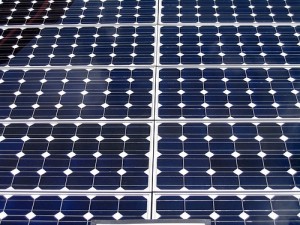Solar Power to Hit Cost Parity Next Year
 By
RP Siegel | March 18th, 2013
By
RP Siegel | March 18th, 2013

They said it couldn’t be done. They tried to tell us that renewable energy could only survive if it were propped up with government subsidies. Never mind that our whole system of economic development, beginning with the patent office, is predicated on the idea that fledgling, underfunded industries need special protection for a limited time until they are strong enough to go it alone. Never mind that the fossil fuel industry, which can hardly be considered fledgling or underfunded, is still receiving billions in taxpayer subsidies.
But like the little engine that could, or the middle aged rock star that, after twenty years of struggling in sleazy dives has suddenly become an overnight sensation, solar power, having now surpassed the 100 GW threshold, has finally arrived and is good to go, in many places, without subsidies.
True, almost a third of that is in Germany, where the government has aggressively backed its development through the successful deployment of feed-in tariffs (FiT). Germany now has five times as much solar power as the U.S., despite the fact that the levels of sunshine it receives are more comparable to Alaska than Arizona, or even Florida (which is closer to Spain).
China is growing faster than any other country and is expected to surpass Germany and take the number one spot this year.
Germany is showing no signs of slowing down either, as their Environment Minister, recently proposed raising their 2020 renewable target to 40 percent and their 2030 target to 80 percent.
The International Energy Agency (IEA) projects that solar installations will more than double to 230 GW by 2017.
This is the kind of progress that we are going to need to avoid the 6 degree Celsius scenario we discussed last week. We might see even more than if the U.S. Congress ever gets its act together to set some kind of energy policy.
With this as a backdrop then, it shouldn’t be a surprise to learn that Deutsche Bank is now forecasting that solar will be standing on its own feet, saying, “We see the sector transitioning from subsidized to sustainable markets in 2014.”
The bank stakes its claim on the emergence of large unsubsidized markets in places like India, where sunshine is plentiful and alternatives are expensive. “Grid parity” has been achieved in India, despite the high cost of capital. This is certainly good news, considering that India is projected to overtake the U.S. as the number two consumer of coal by 2025. Perhaps this development might help to slow that trend.
Spain has also achieved grid parity and has now applied for permits enough to increase their capacity by a factor of ten, including a number of massive installations.
Solar in Italy is also competitive with the grid, “for small commercial enterprises that can achieve 50 per cent or more self consumption.”
Demand is also expected to be strong in subsidized markets including the UK and Japan. And they anticipate legislation in the US, giving solar the same treatment as real estate trust, which would also be favorable, in addition to the investment tax credit (ITC) which remains in force through 2016.
The Deutsche Bank report is the third in a month, joining others from UBS, and the Macquarie Group, all of which have been favorable.
At the same time, the cost of Chinese solar panels in China is expected to drop to a new low of 42 cents per watt in 2015, which will make power generated from solar cheaper than both coal and most forms of natural gas within a decade.
[Image credit: kevinthoule: Flickr Creative Commons]
RP Siegel, PE, is an inventor, consultant and author. He co-wrote the eco-thriller Vapor Trails, the first in a series covering the human side of various sustainability issues including energy, food, and water in an exciting and entertaining format. Now available on Kindle.
Follow RP Siegel on Twitter.
Copyright © 2011 TriplePundit | All rights reserved.
http://www.triplepundit.com/2013/03/solar-power-hit-cost-parity-next-year/